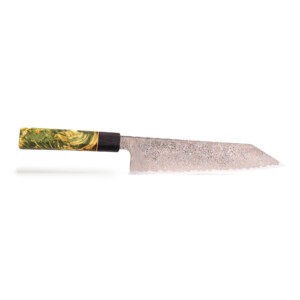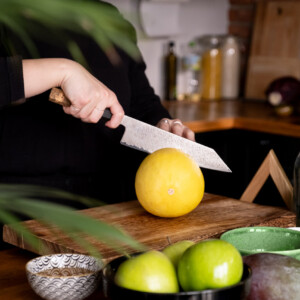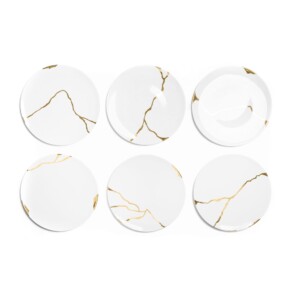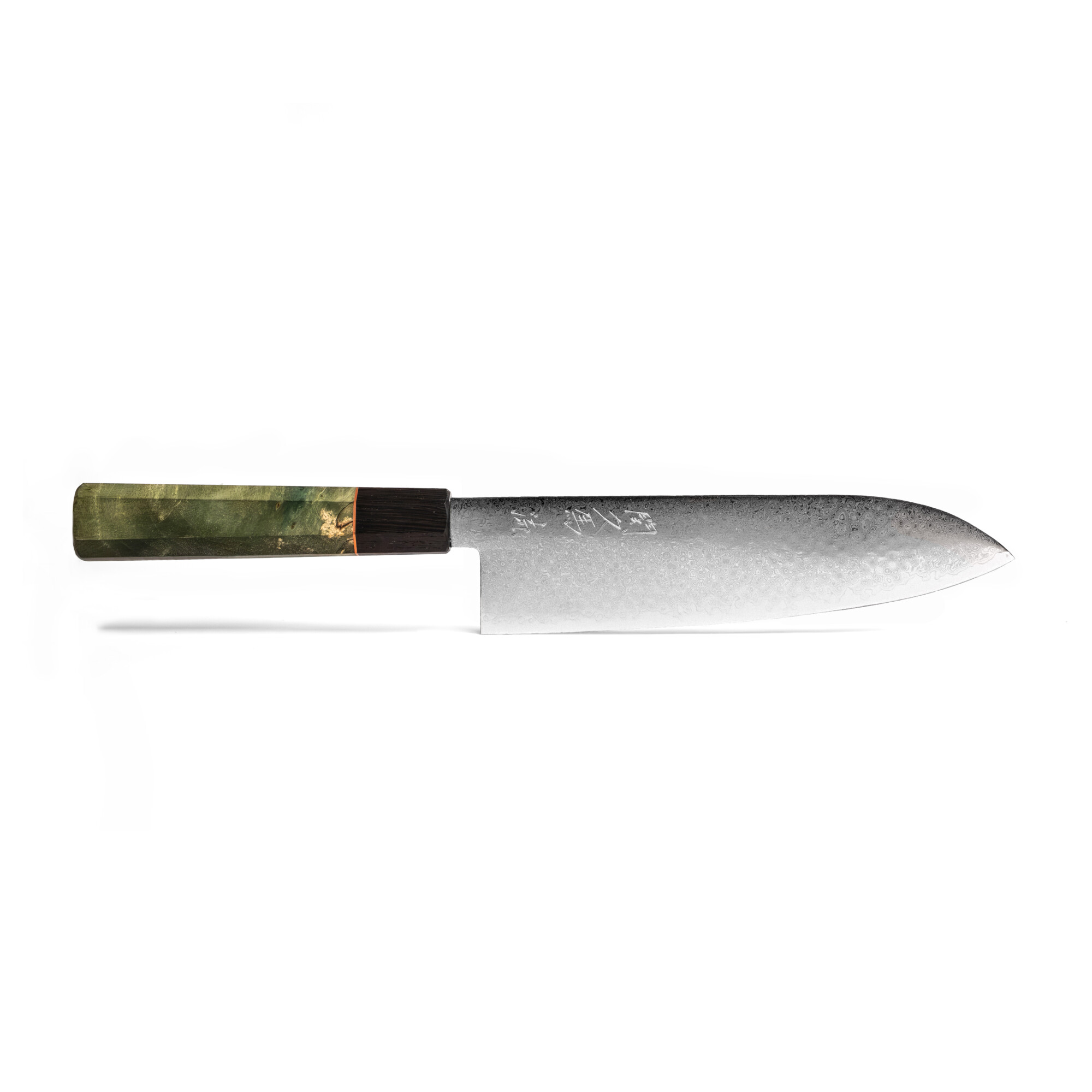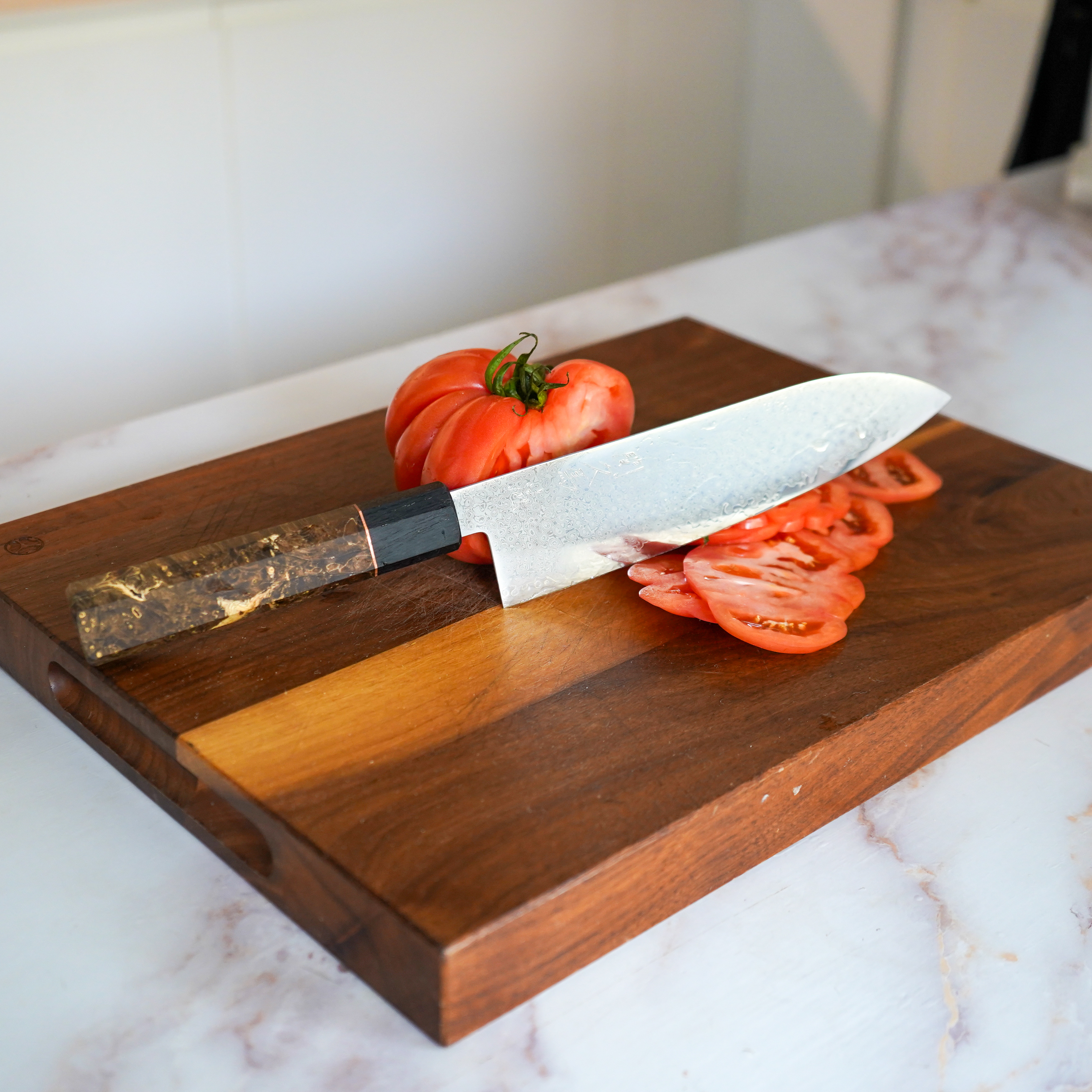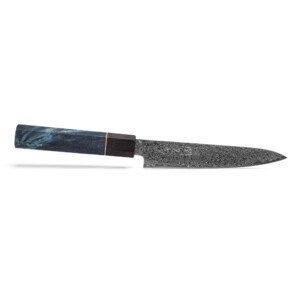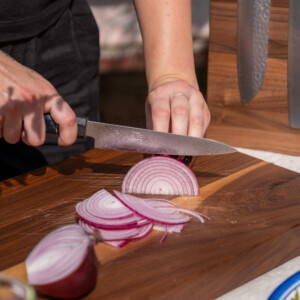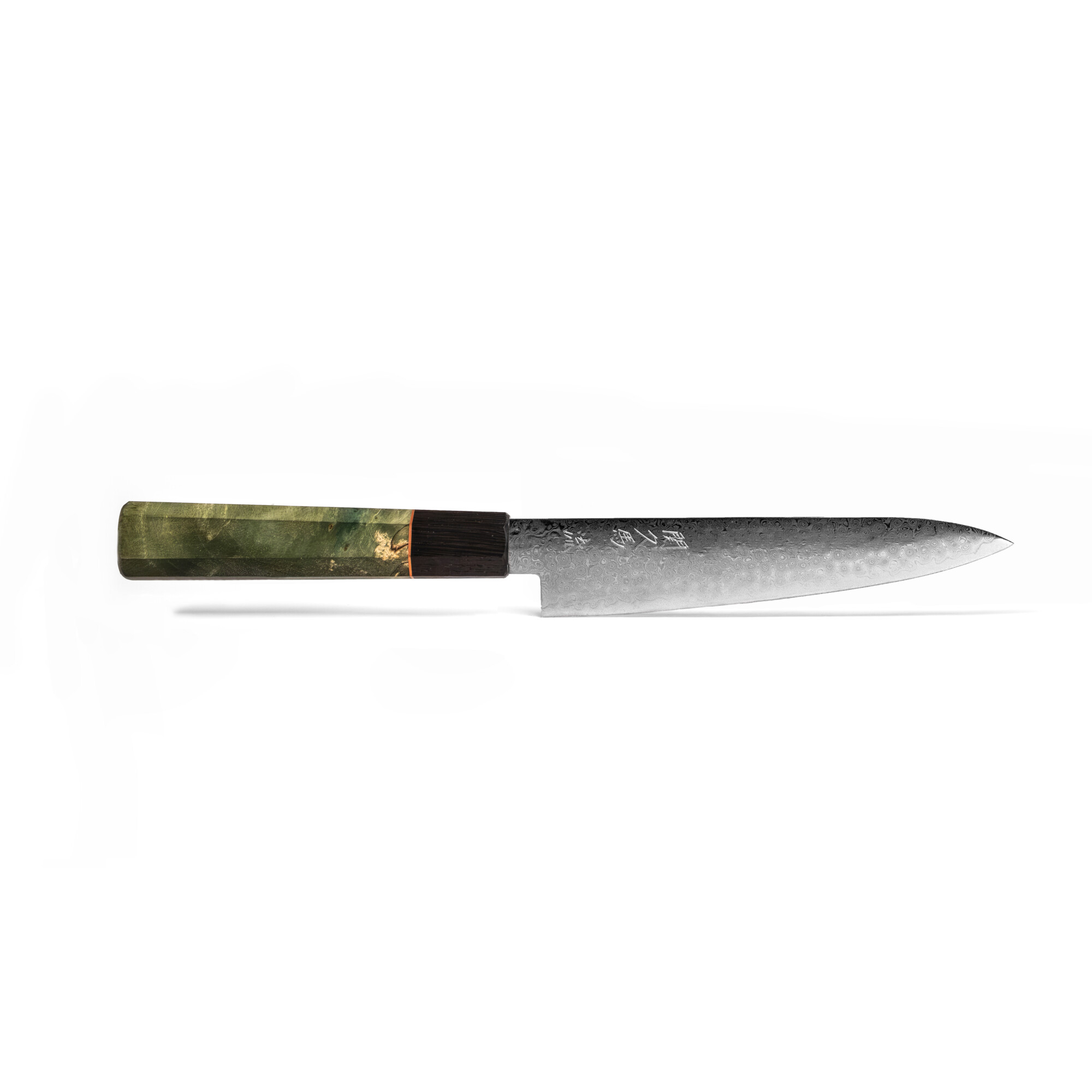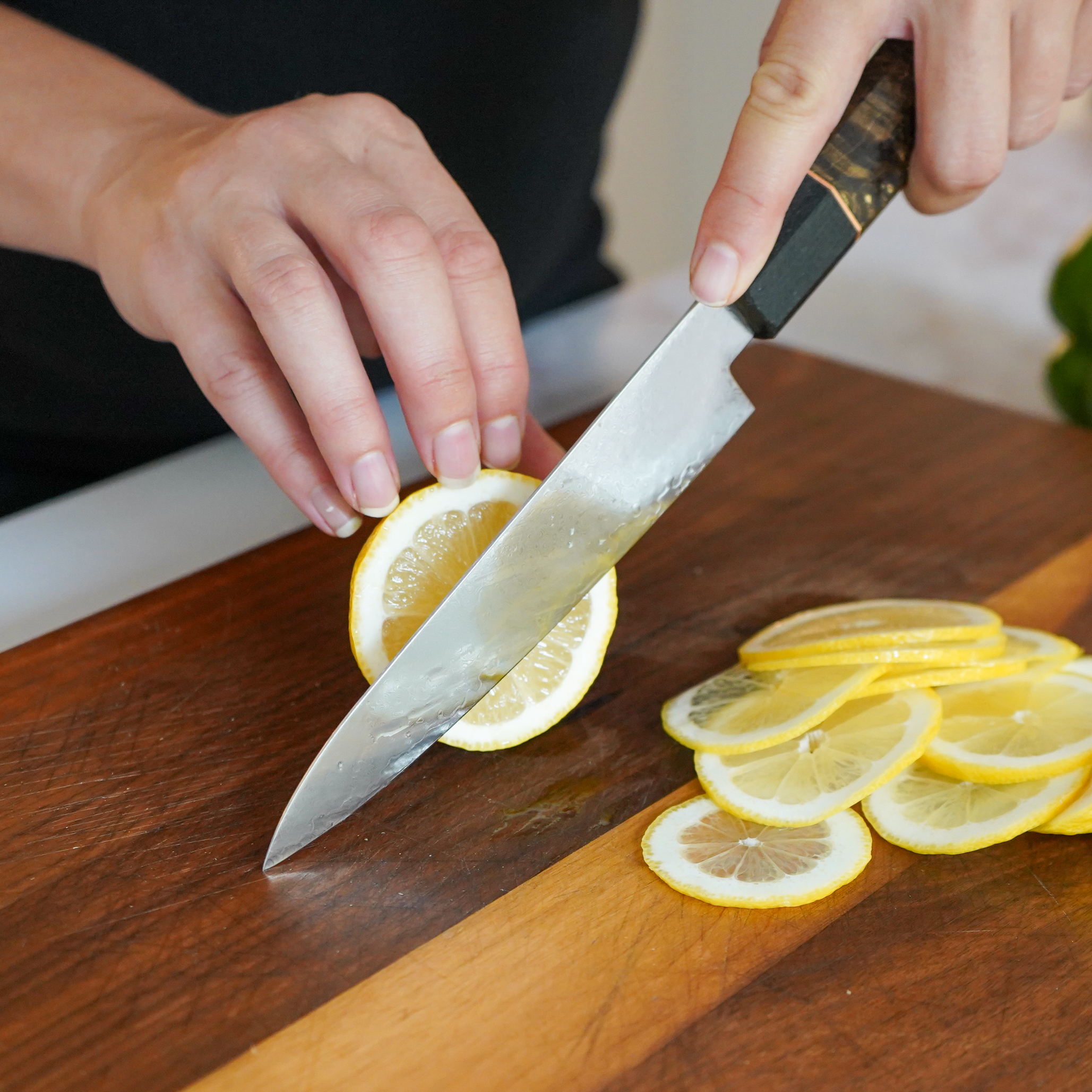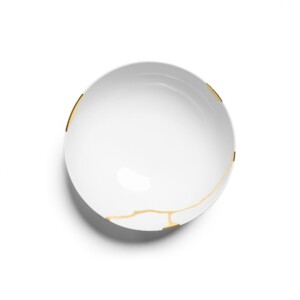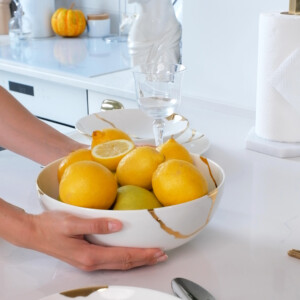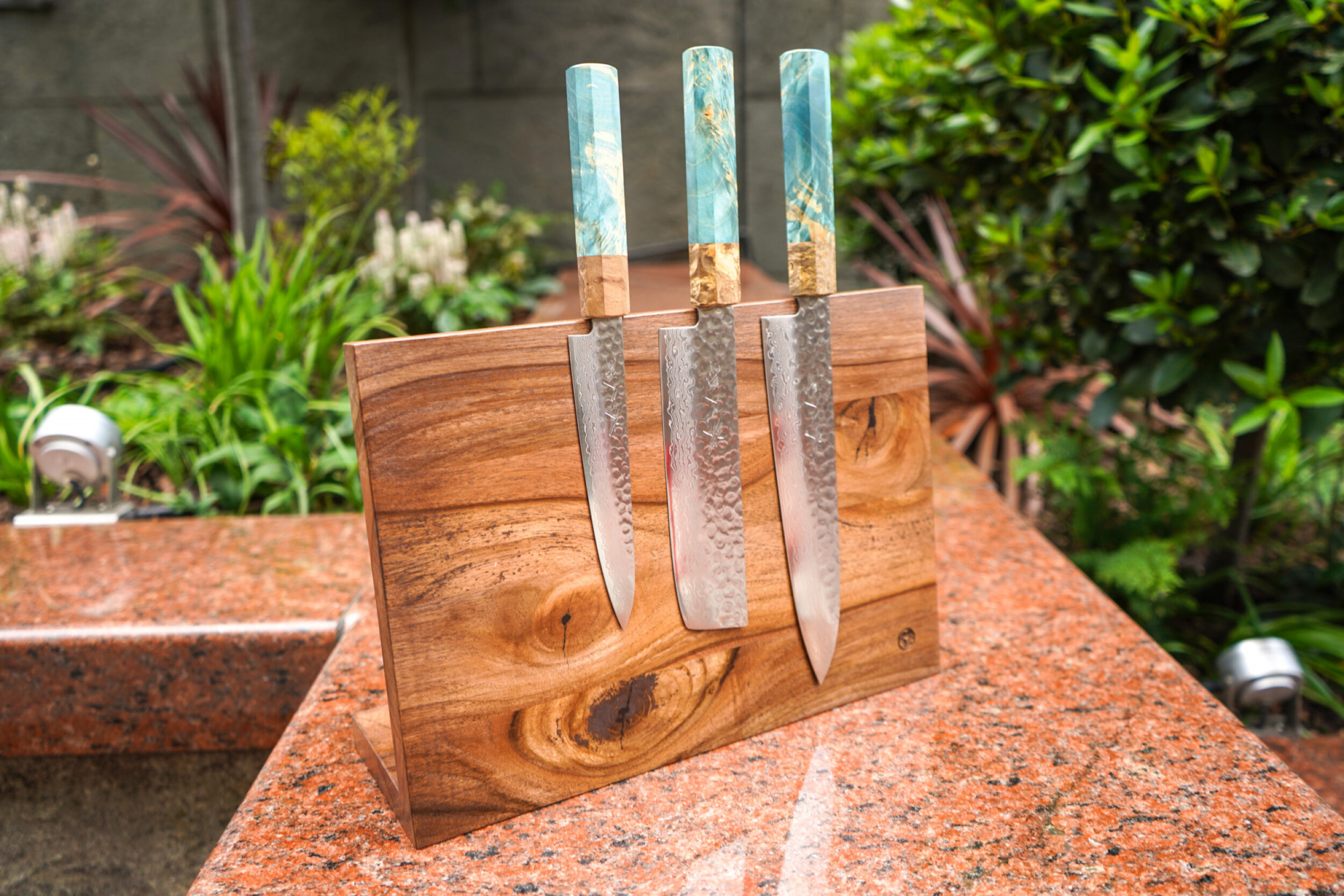In the world of culinary arts, the choice of tools is as vital as the ingredients used. Among these tools, Japanese knives are highly esteemed for their exceptional craftsmanship and performance. This article explores these exquisite knives, with a focus on the renowned Sakai Kyuba and Seki Kyuba ranges, offered by Oishya, a provider of premium yet affordable Japanese kitchenware.
Japanese knives represent more than mere cutting tools; they are the embodiment of centuries of blacksmithing excellence, blending art with functionality. The Sakai Kyuba and Seki Kyuba collections exemplify this, merging the essence of Japanese tradition with modern culinary demands. Alongside these knives, we’ll examine the compatibility with other kitchen essentials like magnetic racks, stands, wooden utensils, and walnut wooden chopping boards, each contributing to a seamless and efficient cooking experience.
As we unveil the reasons behind the worthiness of Japanese knives, we will also include something unexpected, adding an element of surprise to this culinary exploration. Whether for a professional chef or a home cooking enthusiast, understanding the value of these knives and their complementary kitchenware can significantly enhance your cooking ventures.
Join us on this journey to discover the excellence of Japanese knives and learn why they are truly worth their price.
Material and design: the secret behind the quality
Japanese knives are globally renowned for their superior quality, largely attributed to the exceptional materials used in their crafting. At the heart of these knives lies the use of high-quality steel, such as the VG10 high-carbon stainless steel commonly found in top-tier knives, including the Sakai Kyuba range offered by Oishya. This steel is celebrated for its perfect balance between toughness, sharpness, and durability, providing an edge that remains sharp through extensive use.
Damascus steel: A hallmark of quality
A defining characteristic of many Japanese knives is the use of Damascus steel, known for its strength, flexibility, and distinctive wavy patterns. This steel, which often comprises multiple layers, is not only aesthetically pleasing but also functionally superior. Knives like those in the Sakai Kyuba collection feature 46 layers of Damascus steel, enhancing both their performance and visual appeal.

The design of Japanese knives is a careful blend of age-old traditions and modern ergonomic considerations. Each style, from the multipurpose Gyuto to the vegetable-specialist Nakiri, is crafted with specific culinary tasks in mind. The Sakai Kyuba knives, for example, showcase this diversity, catering to various needs with precision and ease.
The handles of Japanese knives are another aspect where craftsmanship shines. Ranging from traditional wooden grips to more contemporary designs, they provide comfort and control during use. The Sakai Kyuba range, with its handles made of colourful maple burl and ancient bog oak, is a testament to this fusion of functionality and artistry.
One of the most appealing aspects of Japanese knives is their longevity. With proper care, including regular sharpening and correct storage, these knives can serve a chef for a lifetime. Brands like Oishya, offering collections such as Sakai Kyuba, often include guarantees, reflecting confidence in their products’ enduring quality.
When compared to other kitchen knives, the superiority of Japanese knives becomes evident. The choice of materials like VG10 steel and the meticulous crafting process set them apart. While Western knives are known for their robustness, Japanese knives, including those in the Sakai Kyuba range, are celebrated for their sharpness and precision.
The role of kitchenware in culinary excellence
The true potential of a Japanese knife is realised when paired with the right kitchenware. From magnetic racks to wooden utensils and walnut chopping boards, each element plays a crucial role in elevating the cooking experience. While the Sakai Kyuba and Seki Kyuba ranges from Oishya are prime examples, the principles apply to all high-quality Japanese knives.
Magnetic racks and stands: essential for knife care

Proper storage is key to maintaining the pristine condition of Japanese knives. Magnetic racks and stands offer an ideal solution, keeping the blades safe and accessible while also showcasing their elegance. This method of storage is not only practical but also complements the aesthetic appeal of finely crafted knives like those in the Sakai Kyuba range.
Wooden utensils and walnut chopping boards: the perfect match
The synergy between Japanese knives and other wooden kitchenware is undeniable. Wooden utensils, known for their softness and durability, are gentle on the knife’s edge, preserving its sharpness. Similarly, a walnut wooden chopping board provides a sturdy yet knife-friendly cutting surface. This combination ensures that the knives, whether from the Sakai Kyuba collection or other high-quality ranges, perform at their best.
The precision of a Japanese knife significantly impacts the texture and flavour of the food. Fine cuts and slices, easily achieved with these knives, bring out the best in ingredients, whether it’s in intricate garnishes or perfectly sliced sashimi. The tactile feedback from using wooden utensils and the solid feel of a walnut chopping board add to the joy of cooking, making the process as rewarding as the result.
Aesthetic and functional harmony in the kitchen
An organised kitchen is a chef’s sanctuary. The integration of elegant Japanese knives with complementary kitchenware not only streamlines the cooking process but also transforms the kitchen into a space of visual and functional harmony. This combination of form and function is exemplified in collections like Sakai Kyuba, where each piece is designed to enhance both the cooking experience and the kitchen’s aesthetics.
In the following section, we will explore the practical applications of Japanese knives in home cooking, focusing on how ranges like Sakai Kyuba and Seki Kyuba become indispensable tools for culinary enthusiasts.
Japanese knives, like those in the Sakai Kyuba and Seki Kyuba ranges, are not just for professional chefs; they are transformative tools for home kitchens as well. Their precision, ease of use, and exceptional sharpness make everyday cooking not only more efficient but also more enjoyable.
One of the standout features of Japanese knives is their user-friendliness. Despite their professional-grade quality, knives from ranges like Sakai Kyuba are designed for easy handling, making them suitable for cooks of all skill levels. Their balanced weight distribution and ergonomic handles ensure comfort and control, reducing fatigue during prolonged use.
Maintaining these knives is straightforward, involving regular sharpening and proper storage, preferably on a magnetic rack or stand. Although they require a bit of care, the payoff is a consistently sharp and reliable tool that can last for years, making them a valuable addition to any home kitchen.
The versatility of Japanese knives is another reason for their suitability in home kitchens. Whether you are preparing intricate dishes that require precise cuts or simply dicing vegetables for a family meal, these knives rise to the occasion. The Sakai Kyuba range, for instance, includes different types of knives like the Gyuto, Santoku, and Nakiri, each tailored for specific tasks, making them adaptable to a wide range of cooking styles.
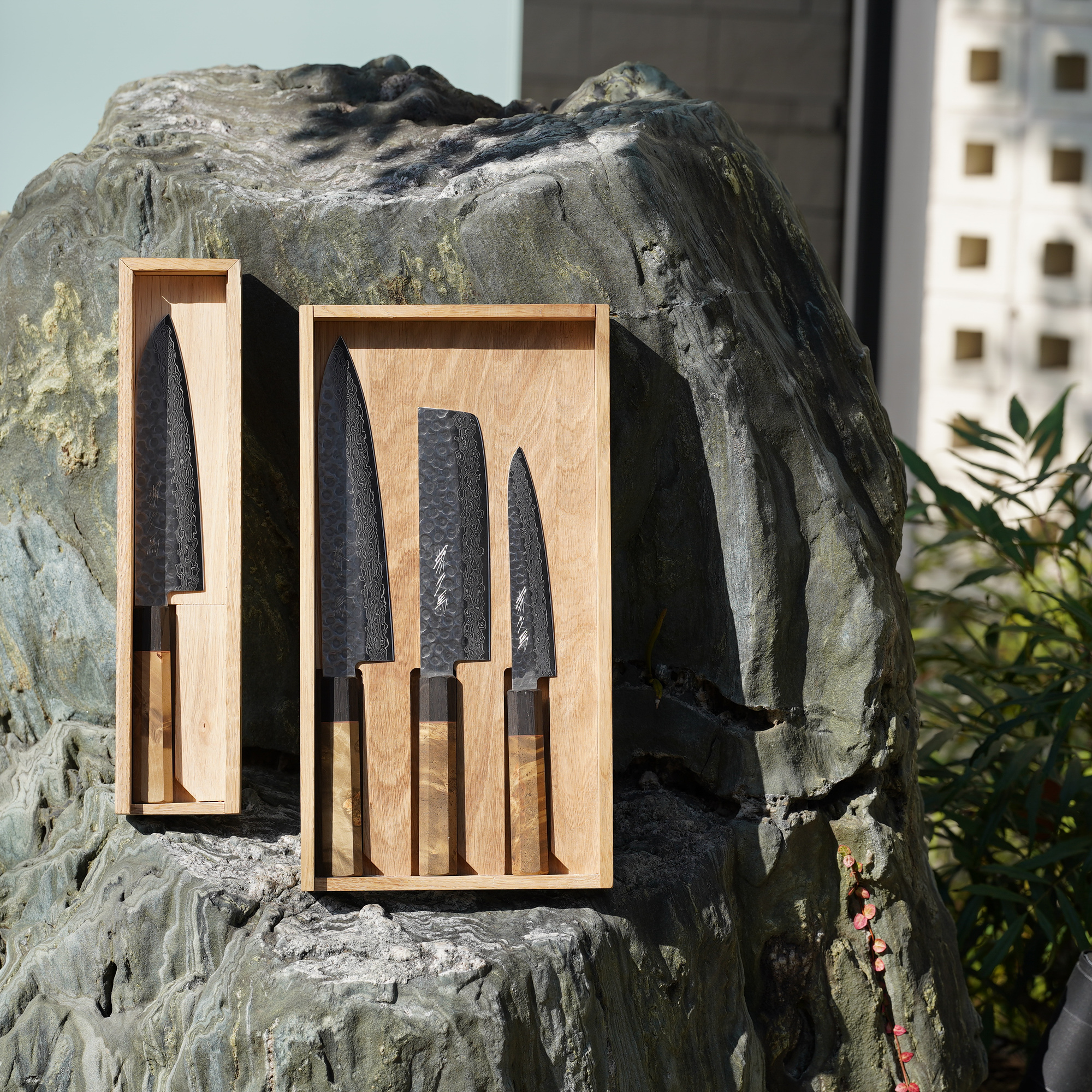
Using a Japanese knife transforms the mundane task of cutting into a pleasurable experience. The sharpness of the blade allows for clean, effortless cuts, which not only improves the presentation of the food but also preserves its texture and flavour. This heightened level of control and precision makes cooking more enjoyable and can inspire home cooks to experiment with new recipes and techniques.
Investing in a high-quality Japanese knife, such as those from the Sakai Kyuba collection, is an investment in culinary joy. These knives, with their superior craftsmanship and lasting durability, become cherished tools in the home kitchen, growing more valuable with each use.
The impact of Japanese knives in home kitchens can be best understood through personal stories and testimonials. Many home cooks who have transitioned to using knives like the Sakai Kyuba range often speak of a marked improvement in their cooking experience, noting the ease, precision, and enjoyment that these knives bring to their culinary adventures.
The sustainable choice: longevity and eco-friendliness
One of the most compelling aspects of Japanese knives, including those from the Sakai Kyuba and Seki Kyuba ranges, is their durability. Crafted from high-quality materials using time-honoured techniques, these knives are built to last. This longevity is not only a testament to their craftsmanship but also a significant factor in their sustainability. By reducing the need for frequent replacements, they contribute to less waste and a lower environmental impact over time.
The choice of materials in Japanese knives is not just about performance; it’s also about sustainability. The use of durable and often sustainably sourced materials, such as the VG10 high-carbon stainless steel and ancient bog oak in handles, reflects a commitment to eco-friendly practices. These materials are chosen for their ability to endure and their minimal environmental footprint, aligning with a more sustainable approach to kitchenware.
Complementing Japanese knives with wooden utensils and chopping boards, like those made of walnut wood, further enhances their eco-friendly nature. Wood, as a renewable and biodegradable resource, is an excellent choice for kitchenware. When combined with the long-lasting quality of Japanese knives, it creates a kitchen setup that is both environmentally responsible and functionally superior.
The exceptional sharpness and precision of Japanese knives, such as those offered in the Sakai Kyuba range, also contribute to reducing food waste. The ability to make clean, precise cuts helps in fully utilising ingredients, reducing scraps and leftovers. This efficiency is not only beneficial for the cook but also for the environment, as it helps in minimising unnecessary waste.
Choosing to invest in a high-quality Japanese knife is a decision that extends beyond mere culinary benefit. It is a choice that reflects an understanding of and commitment to sustainability. These knives, with their long lifespan and minimal need for replacement, embody a sustainable approach to consumption, encouraging a mindset of quality over quantity.
The use of Japanese knives, particularly those that are sustainably crafted and durable, can have a ripple effect on overall cooking practices. They encourage a deeper appreciation for quality, craftsmanship, and the environmental impact of our choices in the kitchen. This mindset, once adopted, can influence other areas of consumption, leading to more environmentally conscious decisions in daily life.
Embracing quality and craftsmanship in the kitchen
In this journey through the world of Japanese knives, particularly the Sakai Kyuba and Seki Kyuba ranges offered by Oishya, we have uncovered the myriad reasons that make these knives a worthy investment. From their rich history and exceptional craftsmanship to their unparalleled quality and sustainable approach, Japanese knives are more than just tools; they are culinary companions that enhance every aspect of cooking.
Investing in a Japanese knife, especially from ranges like Sakai Kyuba, is a decision that goes beyond initial cost. It is about embracing quality that endures, performance that impresses, and craftsmanship that inspires. These knives, while an investment, offer long-term value that is evident in every slice and dice. The pleasure and efficiency they bring to the kitchen are unmatched, making them a smart choice for anyone serious about their culinary pursuits.
Using a Sakai Kyuba or Seki Kyuba knife is not just about cutting food; it’s about embarking on a culinary adventure. These knives encourage exploration, precision, and a deeper appreciation for the art of cooking. They transform mundane kitchen tasks into enjoyable experiences, elevating the act of cooking into an art form.
A little about us
Oishya, with its commitment to offering premium yet affordable Japanese kitchenware, provides the perfect gateway to this world of culinary excellence. Their range of Sakai Kyuba and Seki Kyuba knives, alongside complementary kitchenware like magnetic racks, wooden utensils, and walnut chopping boards, offers everything a cooking enthusiast needs to create memorable meals and enjoy the process of making them.
In today’s world, where sustainability is increasingly important, choosing Japanese knives is a step towards eco-friendly cooking practices. By opting for products that last longer, are made from sustainable materials, and reduce food waste, you are making a choice that benefits both your kitchen and the environment. We invite you to explore the range of Japanese knives and kitchenware at Oishya. Whether you are a professional chef or a home cook, these tools will transform your cooking experience, infusing it with joy, precision, and sustainability. Embrace the art of cooking with Japanese knives and discover how they make every meal an occasion to celebrate.












